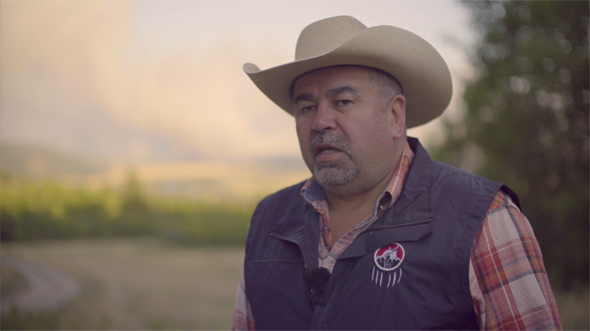By Jeremy Williams –
Travelling to the Chilcotin Plateau on July 16, I was devastated to see first hand so much of the forests destroyed by fire in the Tsilhqot’in territory. I have made 18 expeditions to the area over the last five years, documenting the struggle to protect this magical place and the title and rights of the Tsilhqot’in people.

I was put in a sense of awe, a sense of sheer vulnerability in the face of such a massive force, as the fires consumed mountainsides before my eyes, sending smoke into the stratosphere… with no end in sight.
But what impressed me most was the tenacity of the Tsilhqot’in people, who defied an evacuation order from the Province and stood their ground to fight the fire and protect their homes.
“You don’t come into this territory and this group of people and dictate to us,” said said Chief Alphonse, Chief of Tl’etinqox and Chair of the Tsilhqot’in National Government. “We’ve fought fire generation after generation after generation.
“We want to stand up and we want to do this ourselves… and for that you’re going to send RCMP in here and threaten us?”
Alphonse refers to a constable who threatened to take the children away through the BC Ministry of Children and Families. Now, if you know anything about the history of residential schools, you’ll understand why this was not received well.
“Am I putting my community members at risk here? No,” said Alphonse. “We have some of the most trained firefighters you’re going to find anywhere.”
I heard the story of the push back from the Tsilhqot’in against the evacuation order and as usual, the corporate media portrayed them in a bad light and motivated me to dig deeper, see for myself, and help tell the whole story.
When I arrived at Tl’etinqox, I learned there were 185 trained Tsilhqot’in firefighters, heavy machinery, strategies, and people power. The community was working together around the clock, feeding the hungry, and collaborating with crews from across Canada.
Alphonse explained the situation: “We’re protecting our homes. You know, if these houses go down, we don’t have insurance for them.”
Most Canadians don’t realize that houses on reservation are not owned by individuals and cannot be insured under Indian and Northern Affairs Canada (INAC); that is why they are not insured.
The Hanceville fire later became 200,000 hectares—the second largest in BC’s recorded history.
Sadly, there is no end in sight and the fires may smolder until the first snows finally smother them.
“Today, when you guys go out on that fire, and you fight that fire, you’re protecting our community, you’re protecting our women, you’re protecting our children and our elders,” Chief Joe Alphonse said to his community. “That’s what warriors do. That’s the definition of a warrior.”
Jeremy Williams co-produced a film with David Lavallee called Wildfire Warriors, (https://vimeo.com/229026738) which tells the story of Tl’etinqox and the ongoing fight against the forest fires. You can follow Jeremy Williams online at https://www.facebook.com/RiverVoicesProductions/ or visit his website http://RiverVoices.ca.
